How to Modify CTR-301P (ebay) Photo Flash Triggers for Low Voltage Strobes.
by em21701 in Circuits > Cameras
5133 Views, 3 Favorites, 0 Comments
How to Modify CTR-301P (ebay) Photo Flash Triggers for Low Voltage Strobes.
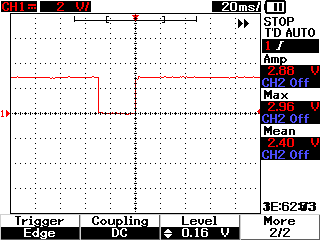
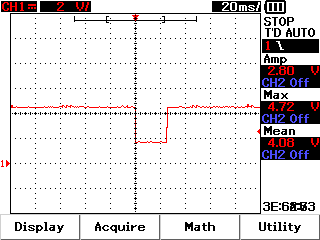
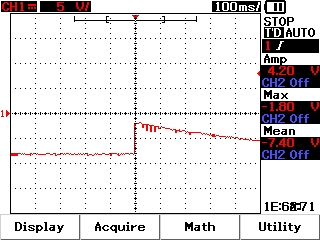
I recently purchased a set of CTR-301P flash triggers from ebay. I was happy that they triggered my studio flashes but disappointed that they did not fire my Promaster hot shoe flash. I did some searching and found that others had added a wire from the hot shoe ground to the battery ground but this did not solve the problem for me.
I decided that I needed to figure out what the difference was between the triggers and the camera hot shoe. I disassembled one of the triggers and the transmitter and measured the trigger pulse of the camera and the trigger pulse of the flash trigger. What I found was that the flash triggers pulse did not drop all the way to zero volts like the camera flash did, it always dropped to two. This is due to a rectifier bridge that was placed in line between the shoe connector and the switching transistor. Looking up the data sheet for the bridge revealed a forward voltage of 1v for each diode. Eureka! I decided to move the hot shoe to the DC side of the rectifier and leave the PC connector on the AC side to maintain the safety that was designed in for AC studio flashes.
You'll need a fine tip soldering iron and the skills to use it, some fine gauge solid copper wire and a black or red marker.
Read on to see how I modified the triggers to eliminate the 2v drop.
Disclaimer: This worked for me and it should work for you. If you do not have experience soldering small surface mount components this is not the project to learn on. If you attempt this and blow up hundreds or dollars in photo equipment, I'm sorry for your loss but you should have spent the money for pocket wizards or radio poppers instead of hacking ebay triggers.
I decided that I needed to figure out what the difference was between the triggers and the camera hot shoe. I disassembled one of the triggers and the transmitter and measured the trigger pulse of the camera and the trigger pulse of the flash trigger. What I found was that the flash triggers pulse did not drop all the way to zero volts like the camera flash did, it always dropped to two. This is due to a rectifier bridge that was placed in line between the shoe connector and the switching transistor. Looking up the data sheet for the bridge revealed a forward voltage of 1v for each diode. Eureka! I decided to move the hot shoe to the DC side of the rectifier and leave the PC connector on the AC side to maintain the safety that was designed in for AC studio flashes.
You'll need a fine tip soldering iron and the skills to use it, some fine gauge solid copper wire and a black or red marker.
Read on to see how I modified the triggers to eliminate the 2v drop.
Disclaimer: This worked for me and it should work for you. If you do not have experience soldering small surface mount components this is not the project to learn on. If you attempt this and blow up hundreds or dollars in photo equipment, I'm sorry for your loss but you should have spent the money for pocket wizards or radio poppers instead of hacking ebay triggers.
Disassemble the Trigger
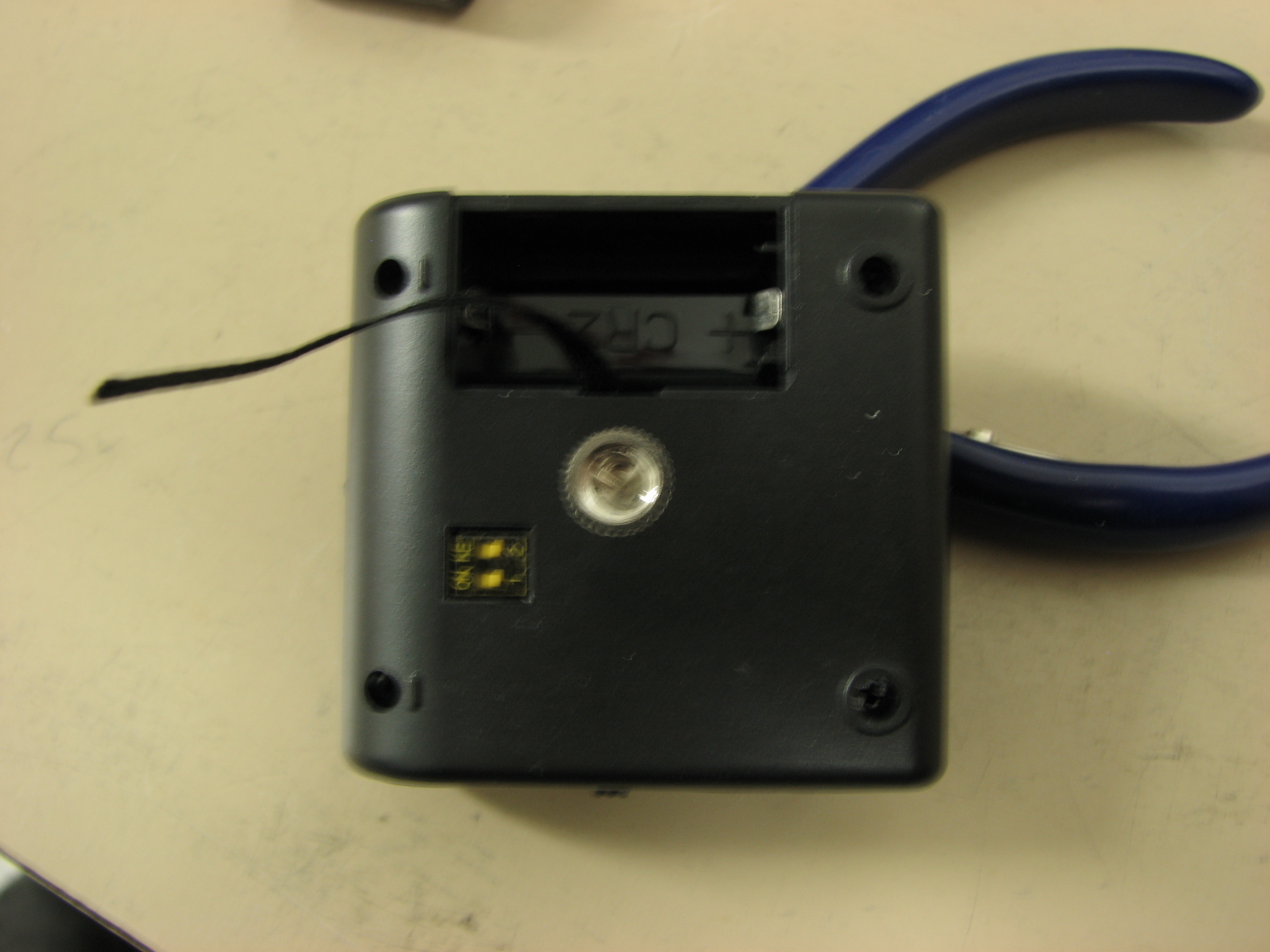
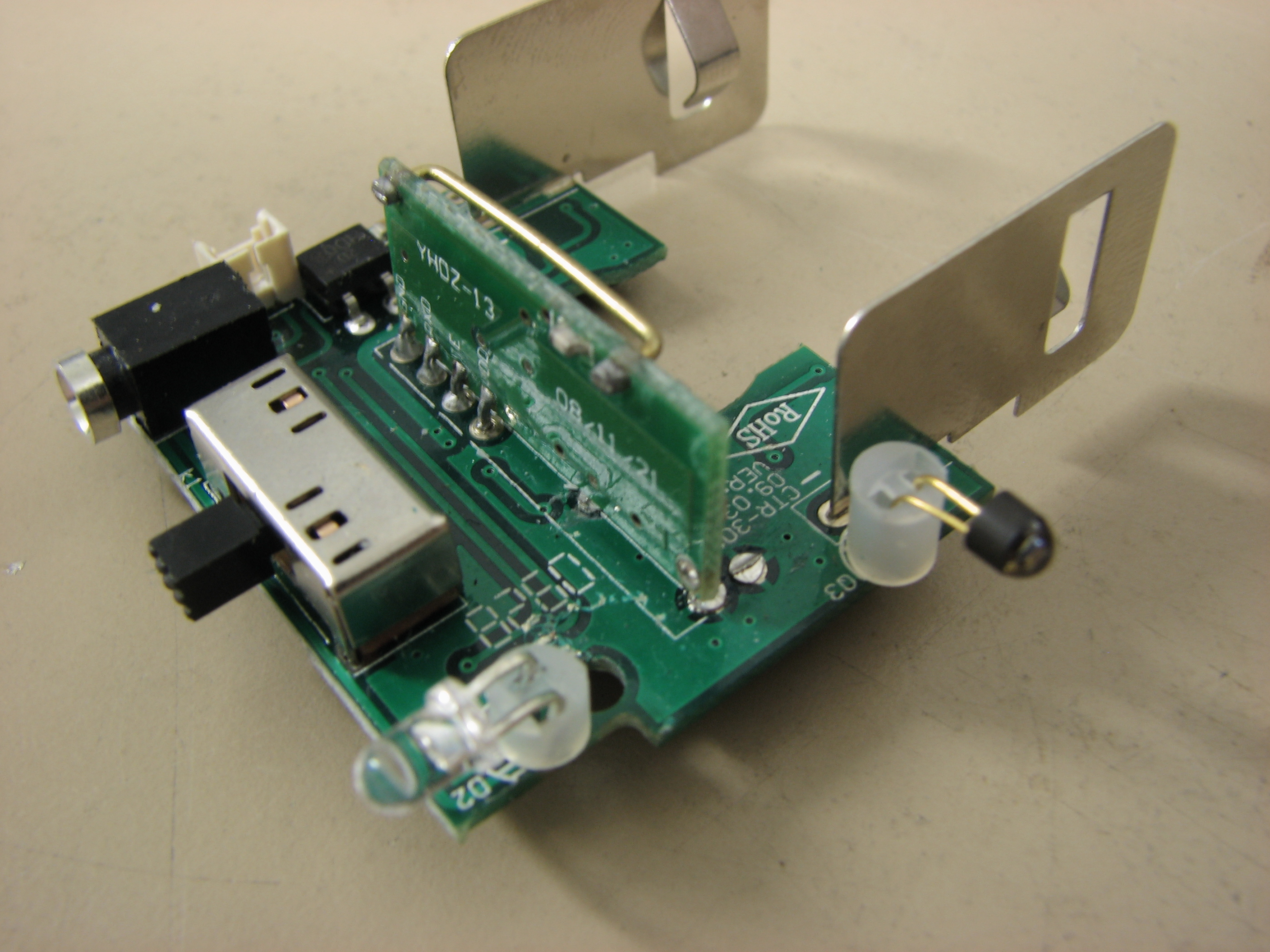
First remove the battery from the trigger.
Then remove the 4 screws from the bottom.
Gently pull apart the two cases. The label on the end where the switch is located is attached with double sided tape. Pull gently and it will come off. Be careful not to pull too hard on the wires that connect the hot shoe to the circuit board.
Gently pull the hot shoe connector from the circuit board.
Now remove the two small phillips screws that hold the circuit board to the case.
The board should pull out easily now.
Then remove the 4 screws from the bottom.
Gently pull apart the two cases. The label on the end where the switch is located is attached with double sided tape. Pull gently and it will come off. Be careful not to pull too hard on the wires that connect the hot shoe to the circuit board.
Gently pull the hot shoe connector from the circuit board.
Now remove the two small phillips screws that hold the circuit board to the case.
The board should pull out easily now.
Remove the Hot Shoe Connector
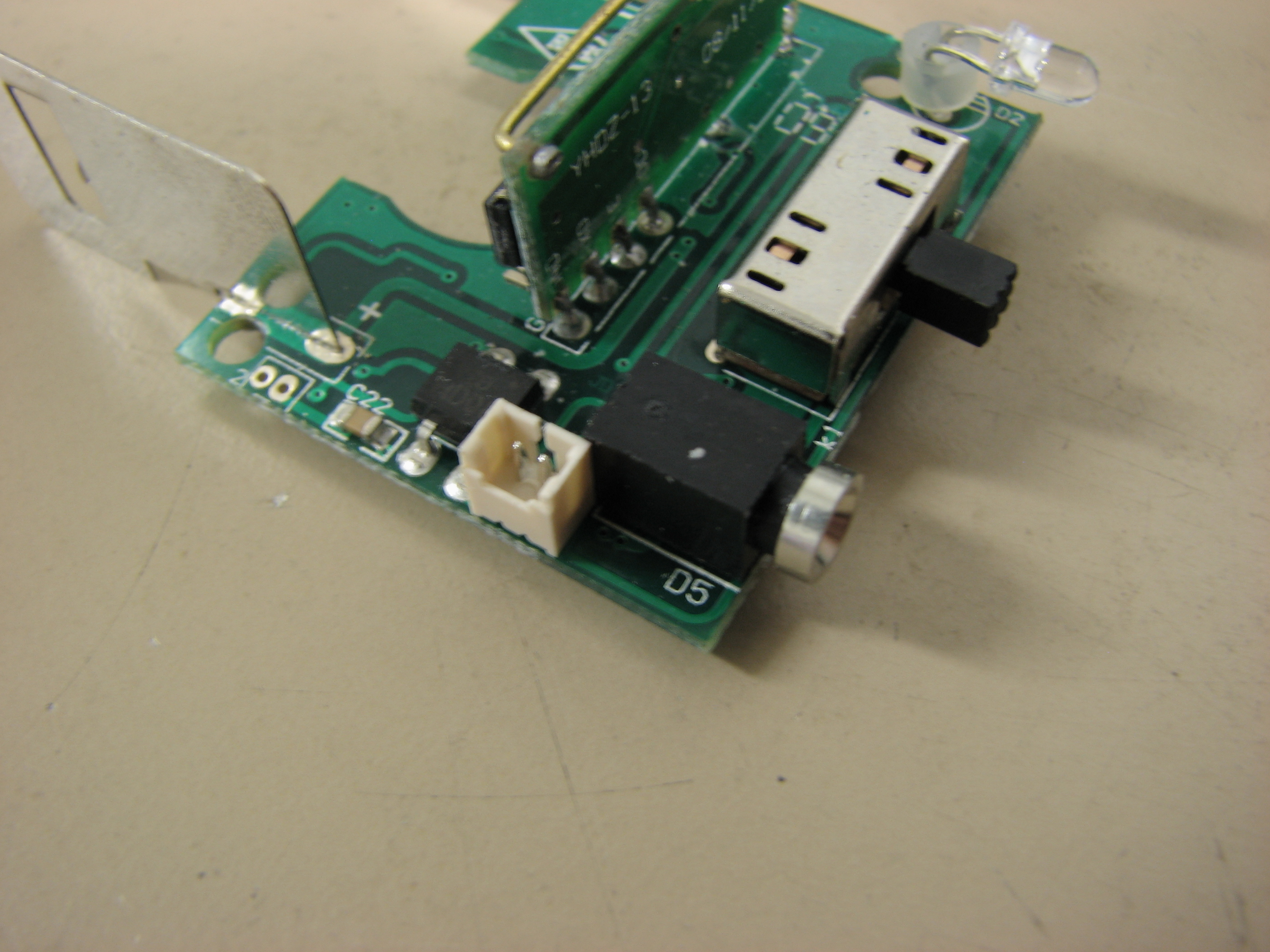
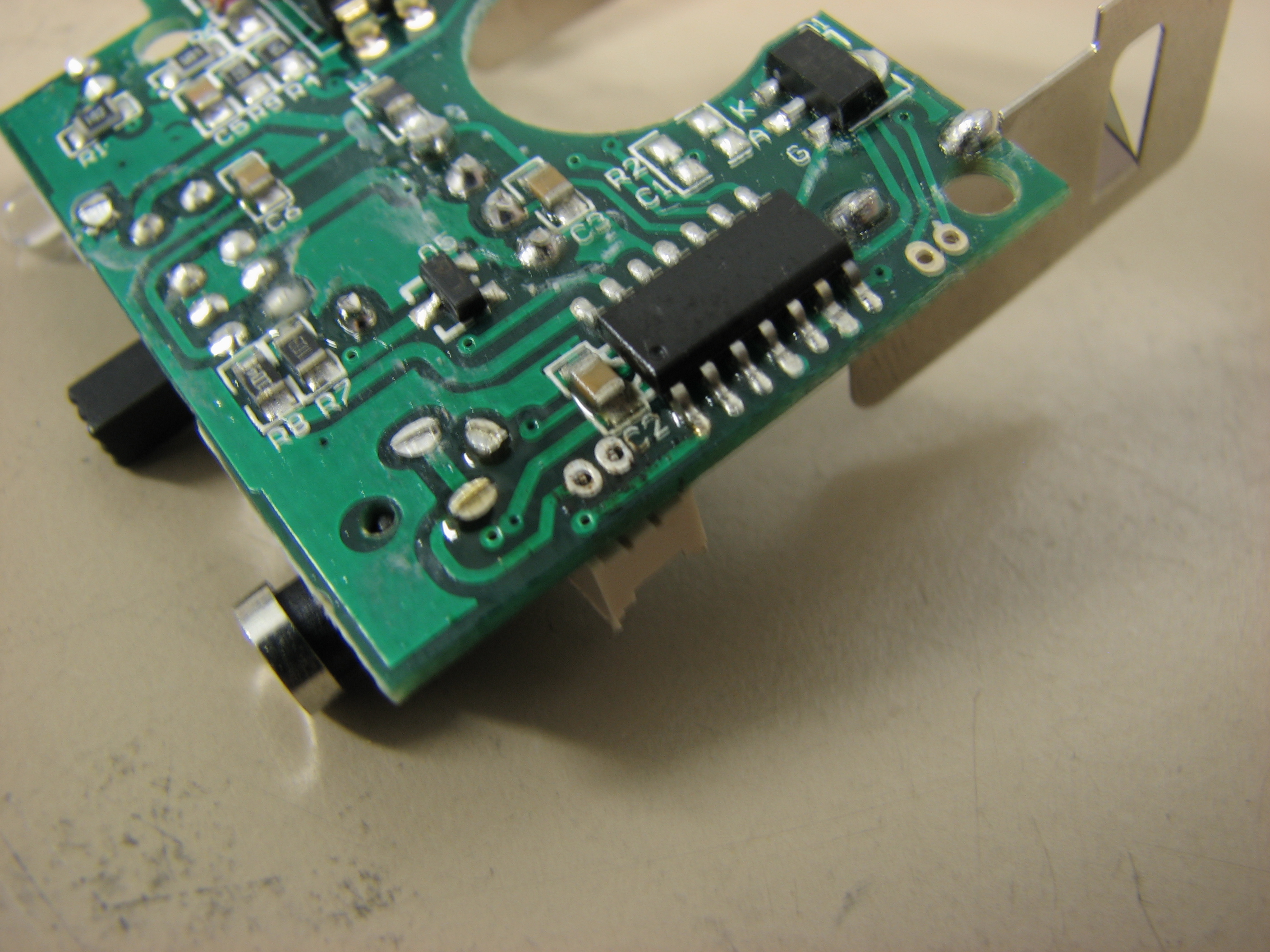
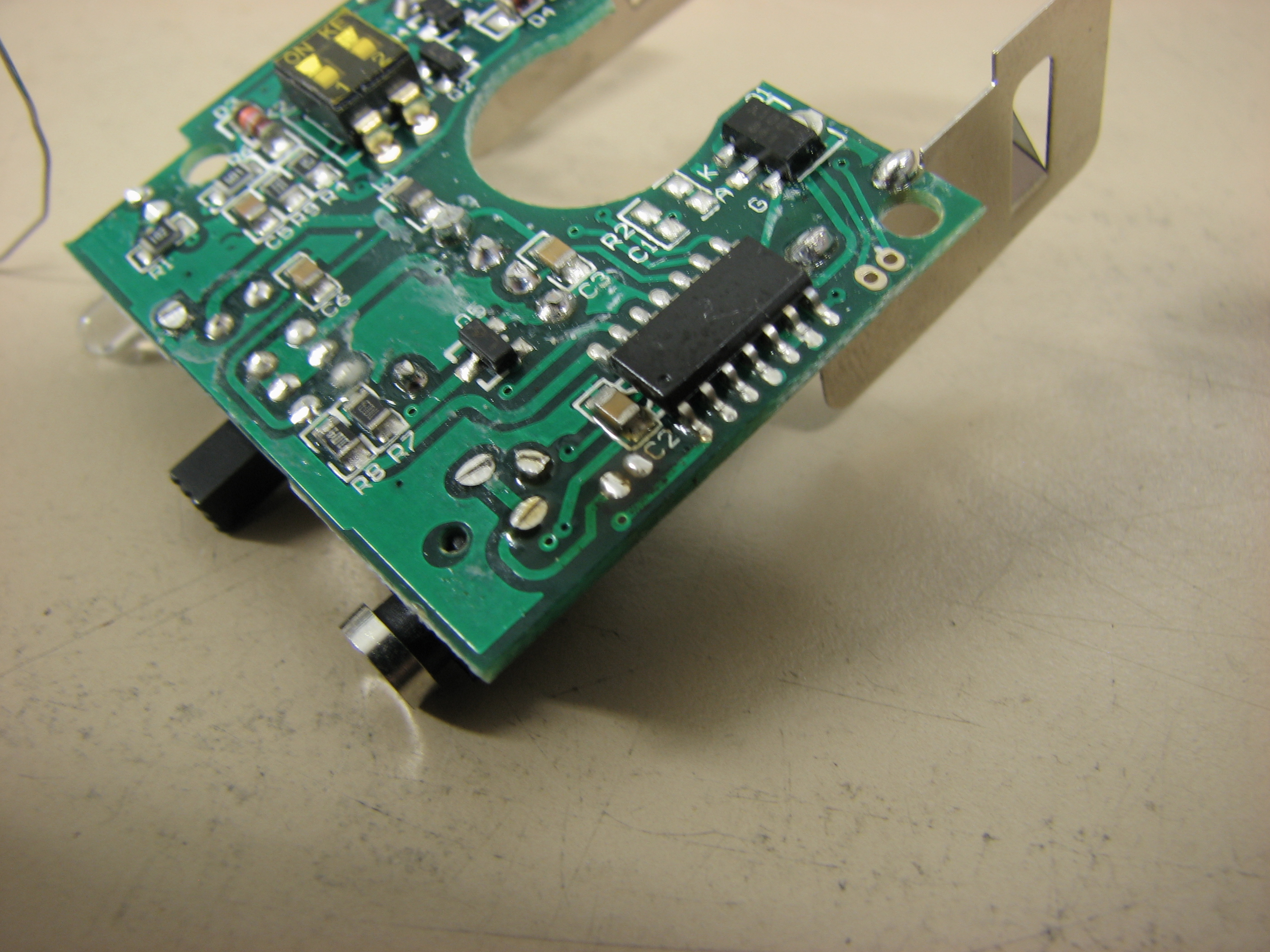
Now we have to remove the hot shoe connector from the board.
Mark the outside of the plastic housing so you can see the wire polarity. I marked the red side with a red sharpie.
Gently pry the plastic housing off the pins with a screw driver or a small pair of pliers. It's only held on by press fitting the pins into grooves on the bottom. Be careful not to break it we'll need it later. Don't scratch up the board either!
Now with a hot soldering iron heat the pins and push them out from the bottom of the board. They are small so be careful not to loose them. Do not over heat and lift the traces or the PC connector will not work when you are done.
Press the pins back into the plastic housing. The little tabs that stick out will nest into the bottom of the plastic and hold the pins in place.
Fill the holes on the board where the pins used to be with solder. These holes are also vias for the PC connector. Filling them will ensure that there is a good electrical connection from the top to the bottom of the board.
Mark the outside of the plastic housing so you can see the wire polarity. I marked the red side with a red sharpie.
Gently pry the plastic housing off the pins with a screw driver or a small pair of pliers. It's only held on by press fitting the pins into grooves on the bottom. Be careful not to break it we'll need it later. Don't scratch up the board either!
Now with a hot soldering iron heat the pins and push them out from the bottom of the board. They are small so be careful not to loose them. Do not over heat and lift the traces or the PC connector will not work when you are done.
Press the pins back into the plastic housing. The little tabs that stick out will nest into the bottom of the plastic and hold the pins in place.
Fill the holes on the board where the pins used to be with solder. These holes are also vias for the PC connector. Filling them will ensure that there is a good electrical connection from the top to the bottom of the board.
Attach the Connector to It's New Location
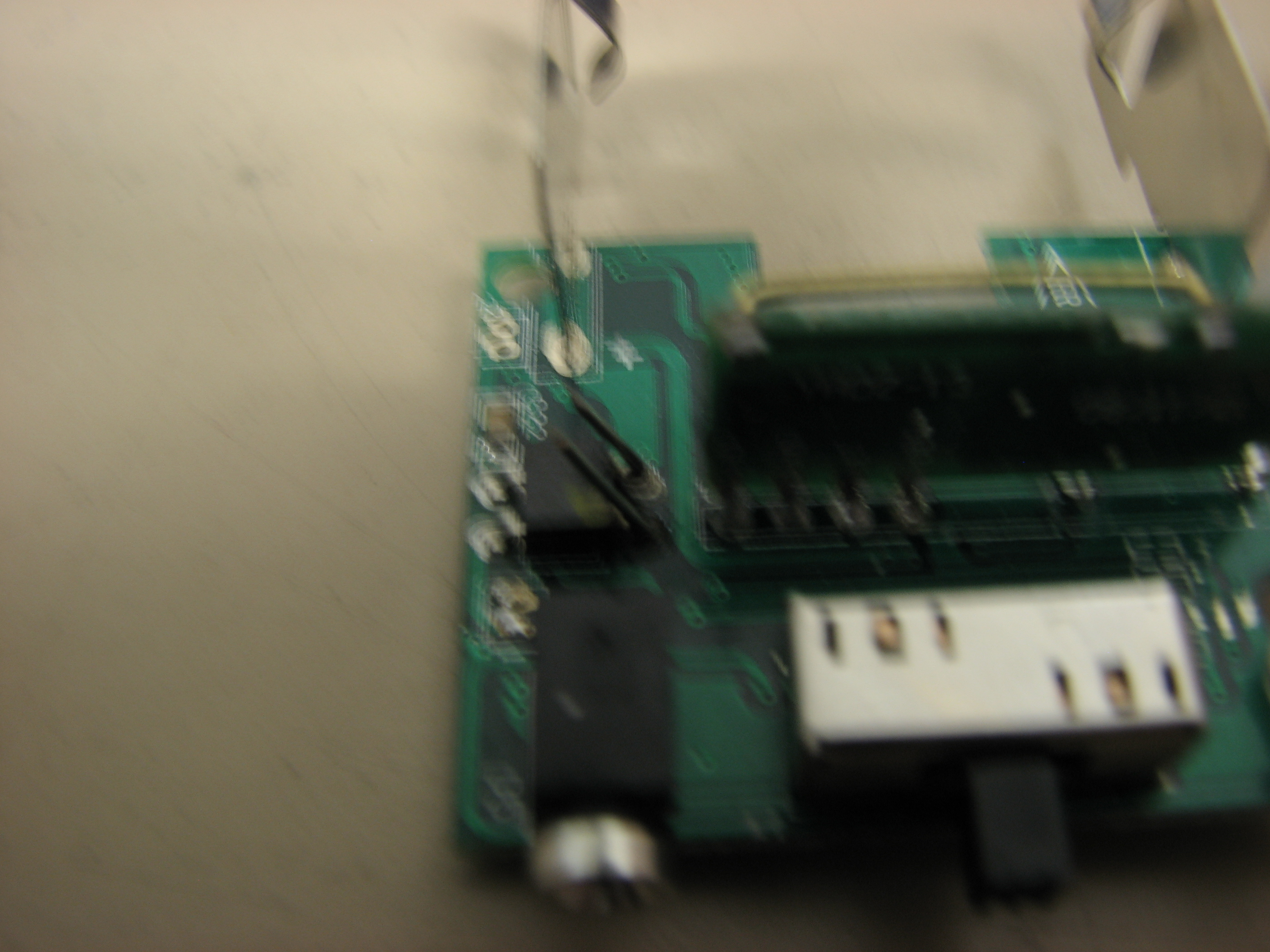
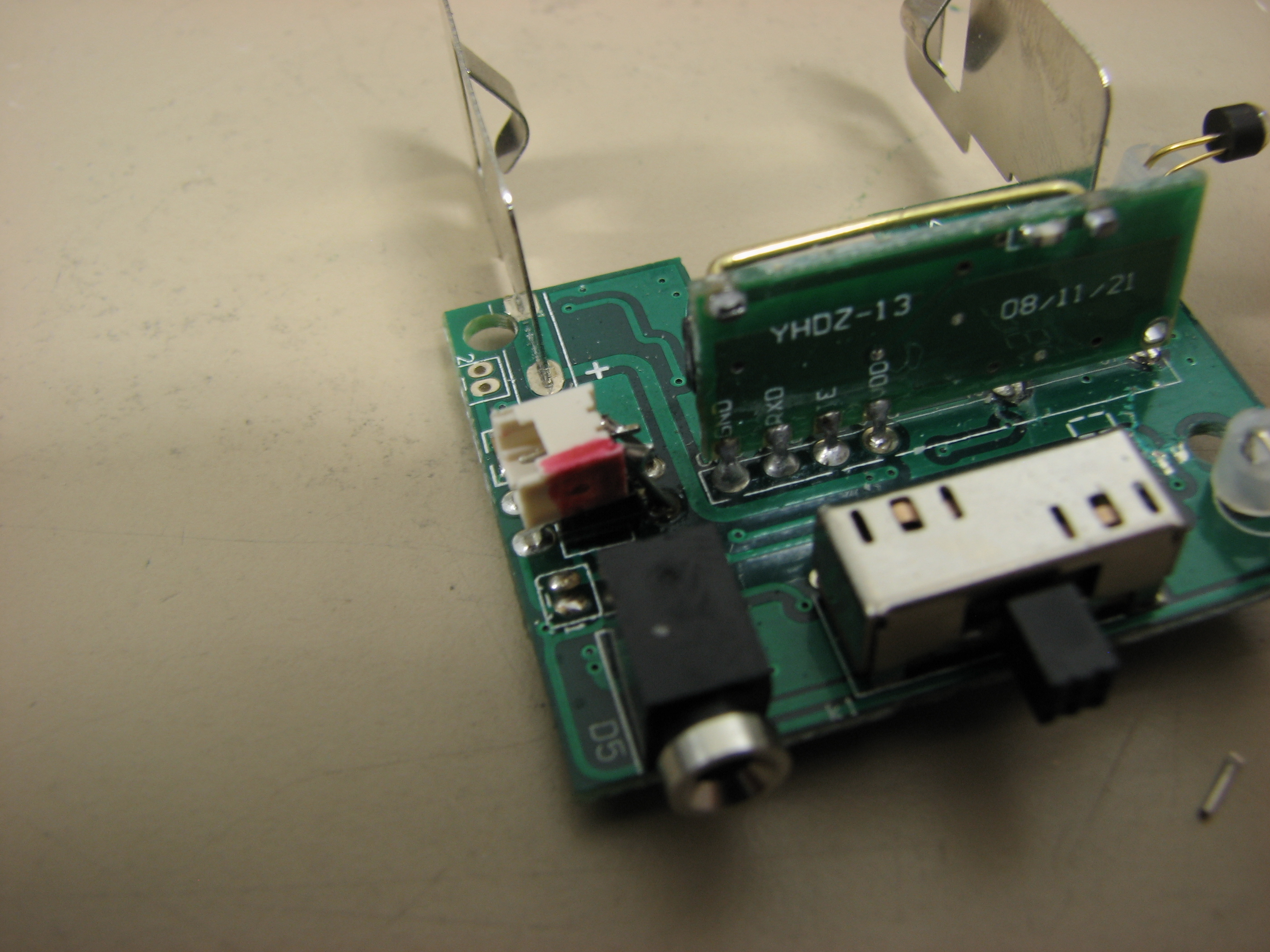
Now we have to solder the connector to it's new home.
Solder a piece of fine solid wire to each of the inside (DC) pins on the rectifier.
Solder the connector to the wires we just attached. The red wire must be attached to the + terminal of the rectifier. There is a + symbol etched on the top, you may need a magnifier to see it.
Solder a piece of fine solid wire to each of the inside (DC) pins on the rectifier.
Solder the connector to the wires we just attached. The red wire must be attached to the + terminal of the rectifier. There is a + symbol etched on the top, you may need a magnifier to see it.
Reassemble and Test
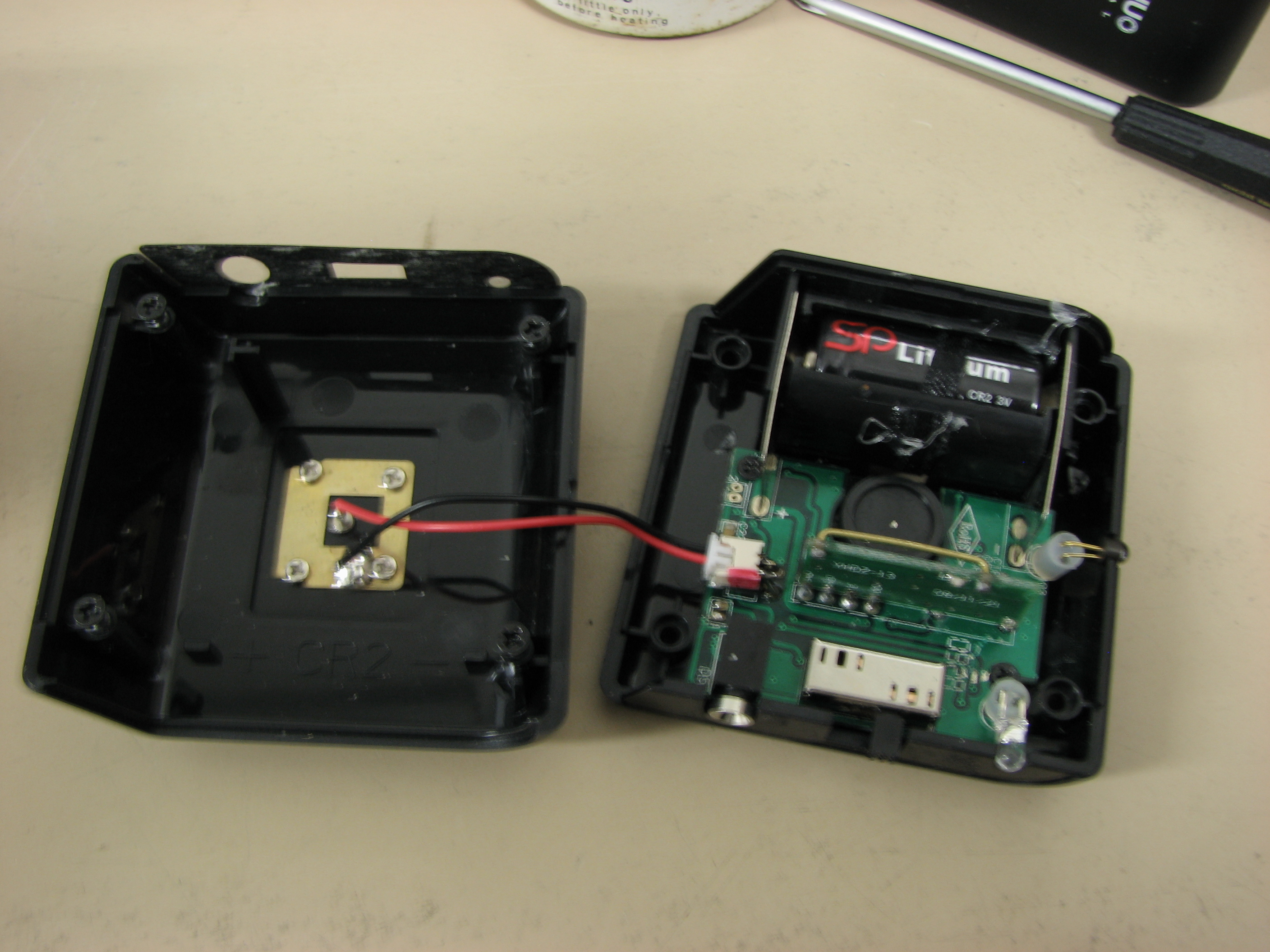
Breathe a sigh of relief, the hard part is finished.
Put the board back into the bottom case and reinsert the two screws that hold the board down.
Carefully plug the connector back into the board. It is fairly delicate now that it is not soldered into the board so support the board side of the connector while inserting the wire side or you will bend the wires and possibly break the solder bonds.
If you are careful you can reinsert the battery and test fire a flash. If you trust your soldering skills go ahead and close the cases and reinsert the 4 screws.
After it's is fully reassembled give it a few more test fires. If you have one, plug a flash into the PC connector and test that too (but not at the same time as the hot shoe!). If you filled the holes in the board you should have no problems with this either.
Did it work? If so pat yourself on the back your done. If not open it back up and check your solder joints.
Hope this helps someone!
Put the board back into the bottom case and reinsert the two screws that hold the board down.
Carefully plug the connector back into the board. It is fairly delicate now that it is not soldered into the board so support the board side of the connector while inserting the wire side or you will bend the wires and possibly break the solder bonds.
If you are careful you can reinsert the battery and test fire a flash. If you trust your soldering skills go ahead and close the cases and reinsert the 4 screws.
After it's is fully reassembled give it a few more test fires. If you have one, plug a flash into the PC connector and test that too (but not at the same time as the hot shoe!). If you filled the holes in the board you should have no problems with this either.
Did it work? If so pat yourself on the back your done. If not open it back up and check your solder joints.
Hope this helps someone!